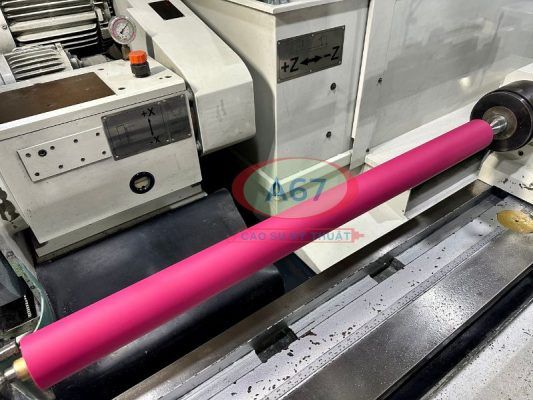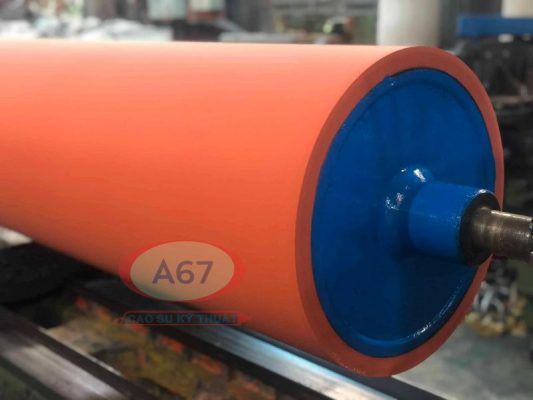No products in the cart.
1. What is UV printing?
UV printing, also known as ultraviolet printing, is a modern digital printing technology that uses ultraviolet light to dry or cure inks instantly as they are applied to a substrate’s surface. As the freshly printed ink passes under high-intensity ultraviolet lamps, the UV light instantly triggers a chemical reaction in the ink. This reaction, known as polymerization, causes the ink to solidify and harden rapidly. The UV curing process occurs within a matter of seconds, resulting in a dry, durable, and smudge-resistant print.

UV Printing
This curing process is different from traditional printing methods, such as offset or flexographic printing, where inks dry gradually through evaporation or absorption into the substrate.
UV light is a product of our sun, and in very small amounts is harmless. However this spectrum is magnified to dry printing inks between the light wavelengths of between 100 and 380 nanometers.
This spectrum is barely visible as the human eye is only able to pick up light starting at around 380 nanometers.
There are four bands of UV light:
- EUV – Stands for Extreme Ultraviolet light. (10–180 nm) Though this band of light is available to the printing industry, there are fewer than 50 printing companies that use it in the world. This extreme light has very limited applications in printing.
- UVC – Stands for Ultraviolet light C band. (180–280 nm) This area of the spectrum ensures immediate curing of the ink. It doesn’t have the penetrating power of the deeper layers, but ensures a quick and cured surface of the printing ink layer.
- UVB – Stands for Ultraviolet light B band. (280–315 nm) This wavelength goes deeper into the ink. For this reason it is more effective than UVC.
- UVA – Stands for Ultraviolet light A band. (315–400 nm) This is the spectrum utilized most by offset printing presses. Hence there is a visible glow to the lights as the human eye is able to pick up this light. It penetrates and dries deeper and is well suited to offset printing presses that apply thicker ink films to paper.
2. The advantages of UV offset printing
- Environmental Benefits: UV inks typically contain fewer volatile organic compounds (VOCs) compared to traditional solvent-based inks, making them a more environmentally friendly option. Additionally, the curing process generates minimal emissions. No harmful emissions are released. This requires no exhaust system during the curing process and results in no health or safety risks to press operators.

UV offset printing
- Fast Drying: UV inks cure almost instantly when exposed to UV light, which means there is no need for drying time. This allows for faster production and reduced turnaround times.
- Works on almost any substrate. UV inks can be used on almost any surface such as the following: glossy paper, matte paper, cardboard, metal substrates, plastic films, glass…
- Special Effects: UV inks can be used to create unique effects like embossing, varnishing, and texture enhancements. They can be applied in multiple layers for added depth and visual appeal.
- Durability: UV-cured prints are highly durable and resistant to fading, scratching, and abrasion. This makes them suitable for outdoor applications and products that require long-lasting, high-quality graphics.
- Gloss levels are higher. The conventional offset process can achieve a glossy finish, particularly on coated paper. However, a higher level of gloss is achieved with UV inks.
- Faster production speeds. The curing process is extremely fast and therefore allows the press to run much faster, not worrying about setoff.
3. The disadvantages of UV offset printing:
- Initial Investment: UV printing equipment tends to be more expensive upfront compared to traditional offset or digital printing machines. This can be a barrier for smaller print shops.
- Limited Substrate Compatibility: While UV inks can be used on various materials, some substrates may require special primers or coatings to ensure proper adhesion and curing. Compatibility testing may be necessary.
- High Energy Consumption: UV curing lamps consume a significant amount of energy, especially in larger printing applications. This can result in higher operational costs.
- Complex Maintenance: UV curing equipment requires regular maintenance and cleaning to ensure optimal performance. Lamp replacement and maintenance can be costly.
- Health and Safety Considerations: UV lamps emit ultraviolet light, which can be harmful to skin and eyes. Operators need to take precautions and use protective equipment.
- Ink Costs: UV inks tend to be more expensive than traditional inks, which can affect the overall cost of the printing job.
- Limited Color Range: Achieving certain colors or special effects with UV inks may be more challenging compared to other printing methods.

 Tiếng Việt
Tiếng Việt